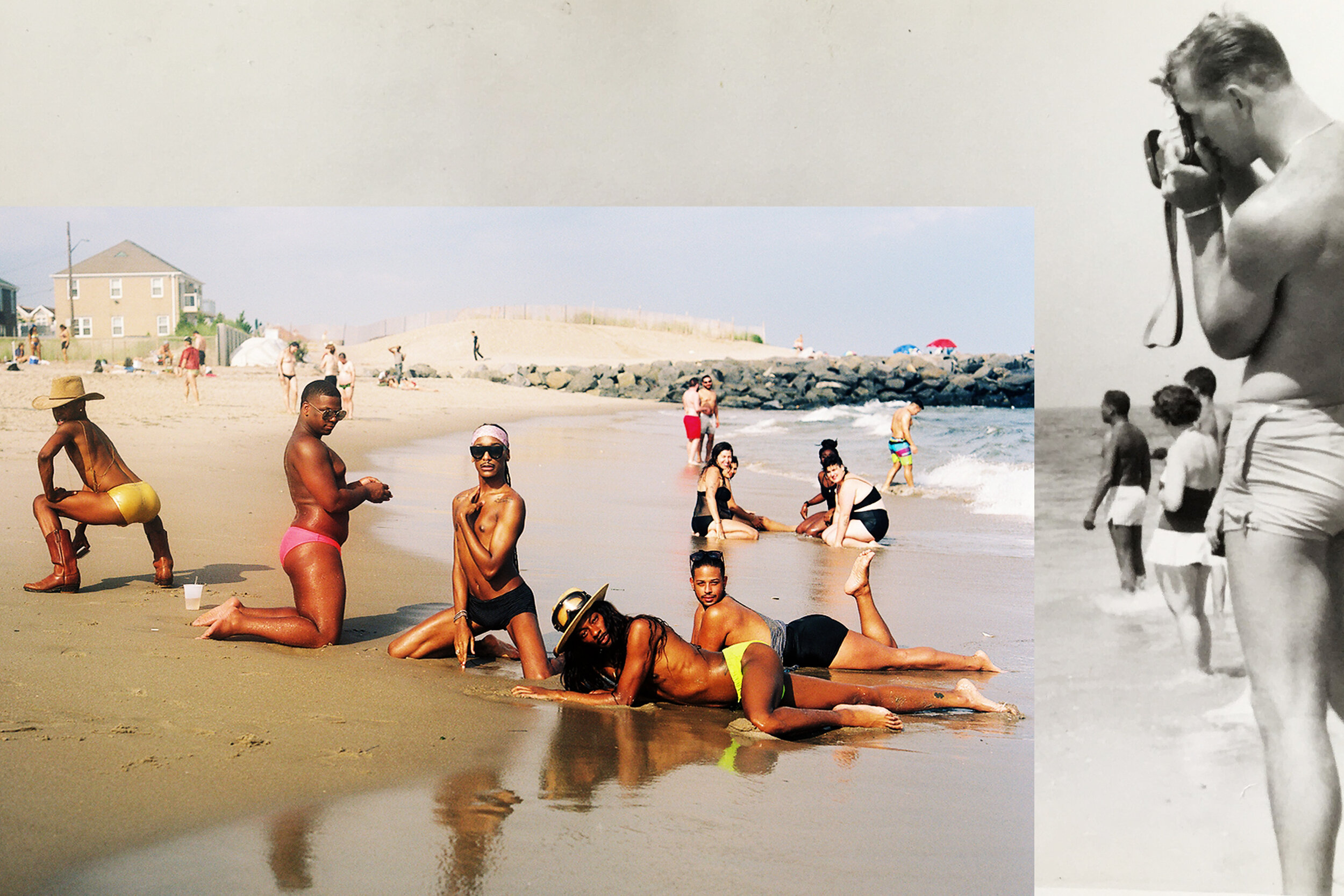“A Protest Against Forgetting”
Lorraine Robinson
Chris Bernsten, Erotohistoriography Riis 1955/2017 - From the series, No Other Name Than Their Own
When Markus Miessen asked Hans Ulrich Obrist what he considered to be “radical” in the art world, Obrist replied: “Memory…Memory is very radical right now.” [1] Alluding to the way in which modern society essentially operates without a sense of the past, Obrist invokes historian, Eric Hobsbawm’s passionate plea to encourage society to “protest against forgetting.” Obrist’s response, thus postulates the role art needs to fulfill in remembering the past. Through the lens of art and history, Chris Bernsten’s series of photo collages titled, No Other Name Than Their Own calls upon the spirit of memory to dance between the past and the present.
Bernsten’s images capture the queer community, which for decades has gathered at the eastern end of Riis Park Beach, in what is the shadow of an abandoned tuberculosis sanatorium. Through historic visual research made at the LGBTQ Center in New York, Chris was able to obtain archival vernacular photographs of this delicate, yet liberated queer space, of which he then combined and collaged with his own contemporary photographs. The images achieve to bear witness to the forgotten queer community who every summer for the past one hundred years danced, laughed, swam, and held each other under the light of the sun; in a time when hiding under the cover of darkness meant survival.
Chris Bernsten, Erotohistoriography Riis 1955/2017 - From the series, No Other Name Than Their Own
Bernsten takes the concept of the radical memory by creating a non-linear perception of time, blurring the lines between the present and the past – and does so without leaving behind the historic effect the older queer generation has had on present and future generations.
Riis Park Beach, the location which No Other Name Than Their Own carries within, embeds layers of visual documentation history that has been obscured and contrived throughout time. The park is named after the social documentary photographer Jacob Riis, who published a series of Dickensian-like images in 1890, titled How the Other Half Lives. This series features photographs taken of New York’s poorest classes, under the theme of social documentation; a theme that Susan Sontag describes as, “an essentially middle-class attitude, both zealous and merely tolerant, both curious and indifferent, called humanism-which found slums the most enthralling of decors.”[2] Riis’s stereotyped material created a social-class barrier, between photographer and subject, where the absence of empathy towards the subject is inherent. Furthermore, the voyeuristic nature of Riis’s social documentation of how the “other half lives” places the images in a precarious realm: where the past is forgotten. Bernsten counters Riis’ narrative by saying, “Jacob Riis photographed things he wanted to see not exist and I want to photograph things that I want to see exist.”
Chris Bernsten, Erotohistoriography Riis 1955/2017 - From the series, No Other Name Than Their Own
No Other Name than their Own is a “protest against forgetting” in the way it illuminates Riis Park as a historically queer beach. The collages depict a geographic refuge in Queens that predates many of the LGBTQ+ laws, as well as the years of devastation AIDS brought onto the community. Expressed in Bernsten’s own words: “We don’t think of queerness as having such a long lifespan, but this has been a gay beach for longer than most people live; therefore, I need to create visual proof of how important and sacred this space is for us.”
Bibliography
[1] Obrist, H.U., Everything You Always Wanted To Know About Curating, But Were Afraid To Ask, New York, Sternberg Press, 2011
[2] Sontag, Susan. On Photography, 1973, https://sites.evergreen.edu/politicalshakespeares/wp-content/uploads/sites/156/2016/01/Sontag_On_Photography.pdf, Accessed April 2, 2021


